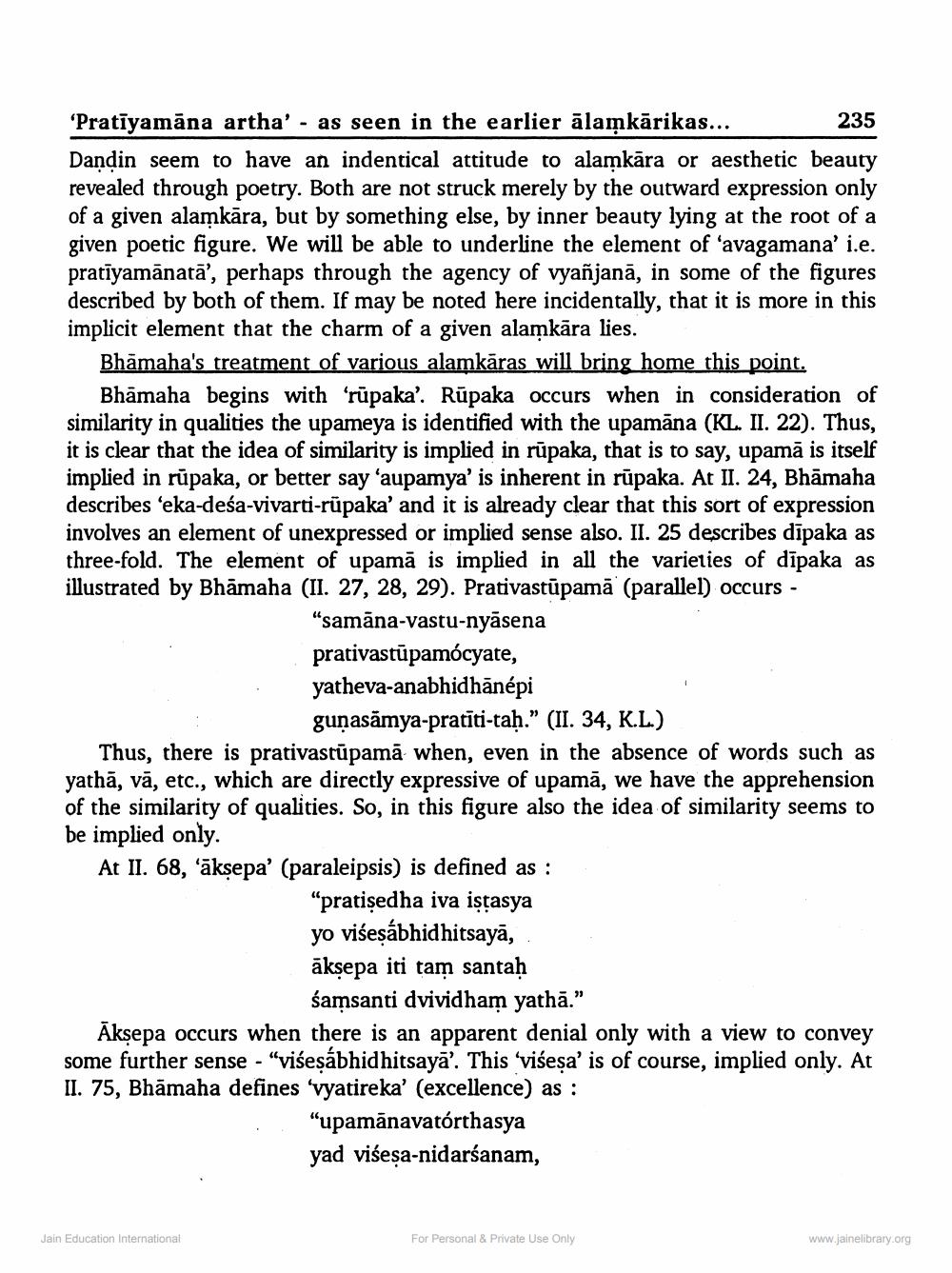________________
'Pratīyamāna artha' - as seen in the earlier alamkārikas...
235
Dandin seem to have an indentical attitude to alamkara or aesthetic beauty revealed through poetry. Both are not struck merely by the outward expression only of a given alamkāra, but by something else, by inner beauty lying at the root of a given poetic figure. We will be able to underline the element of 'avagamana' i.e. pratīyamānatā', perhaps through the agency of vyañjanā, in some of the figures described by both of them. If may be noted here incidentally, that it is more in this implicit element that the charm of a given alamkāra lies.
Bhāmaha's treatment of various alamkāras will bring home this point.
Bhamaha begins with 'rupaka'. Rūpaka occurs when in consideration of similarity in qualities the upameya is identified with the upamāna (KL. II. 22). Thus, it is clear that the idea of similarity is implied in rupaka, that is to say, upamā is itself implied in rūpaka, or better say 'aupamya' is inherent in rūpaka. At II. 24, Bhāmaha describes 'eka-deśa-vivarti-rūpaka' and it is already clear that this sort of expression involves an element of unexpressed or implied sense also. II. 25 describes dīpaka as three-fold. The element of upama is implied in all the varieties of dīpaka as illustrated by Bhamaha (II. 27, 28, 29). Prativastūpamā (parallel) occurs -
"samāna-vastu-nyasena
prativastūpamócyate,
yatheva-anabhidhānépi
gunasamya-pratiti-taḥ." (II. 34, K.L.)
Thus, there is prativastūpamā when, even in the absence of words such as yathā, vā, etc., which are directly expressive of upamā, we have the apprehension of the similarity of qualities. So, in this figure also the idea of similarity seems to be implied only.
At II. 68, 'ākṣepa'
(paraleipsis) is defined as : "pratiṣedha iva iṣṭasya yo viseṣábhidhitsayā,
ākṣepa iti tam santaḥ śamsanti dvividham yathā."
Akṣepa occurs when there is an apparent denial only with a view to convey some further sense - “viseṣábhidhitsaya”. This 'viseṣa' is of course, implied only. At II. 75, Bhāmaha defines 'vyatireka' (excellence) as :
Jain Education International
"upamanavatórthasya
yad viseṣa-nidarśanam,
For Personal & Private Use Only
www.jainelibrary.org




